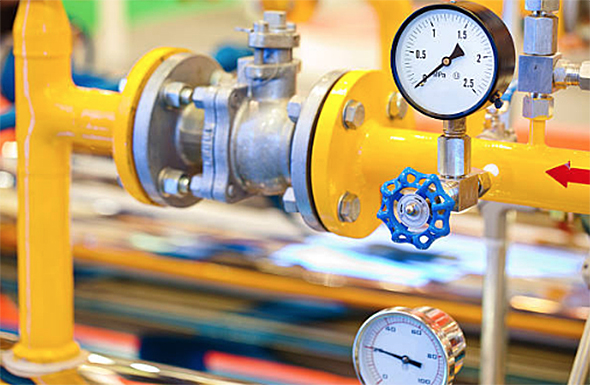
Show Me the Pressure
By Scott Sardina, PE, CFPHS, CFPPS, CFPS, CFPAI
Subscribe to any fluid power magazine or go to their website, and you will find how to pick out a pressure gauge. This article will not teach that; however, I hope this experience teaches a clever way to install pressure gauges into a system.
Every system I have ever designed has included a pressure gauge, or at a minimum, test points. It is important to know what kind of pressure there is in different parts of the system. Troubleshooting or valve set-up are a couple reasons for pressure gauges. A gauge can also be used to assess the performance of a system during operation.
Not too long ago, I came across a system from the 1960s. The components weren’t changed much over the years, and the system didn’t operate as efficiently as it could. The system did not have a hydraulic schematic, nor did anyone understand how everything was connected and working together. The first comment on site was, “We aren’t getting enough pressure.” This lack of pressure was due to the fact that there was one pressure gauge for an entire room full of presses that were all intertwined.
I started to work my way through all the presses, and quickly realized that none of the presses had a place to put a gauge and no test points existed. There were relief valves and other pressure regulators that were being adjusted, but no way to verify the setting. The only way to add a port for a pressure gauge was to shut down the system to install it into the piping. However, this was not an option because production was not allowed to stop at the time.
Everything on this particular system ran off of a central pumping unit, which meant all 26 presses had to be shut down at the same time. The connections between the components were hard piped. This makes it more difficult to add anything between connections. It seemed the only options were to modify the piping to add a tee or weldolet port for a gauge, but these options would require more downtime than the customer wanted.
While surveying the equipment, I realized that there were a lot of ball valves installed throughout the system. Every press had a ball valve prior to the directional or pressure control valve of the press. I wondered if it was possible to replace the ball valve with a similar one that had a gauge port out the side of it. After doing some research, I found that there were low pressure versions of the valves, but none for higher pressures.
I began contacting ball valve manufacturers about this type of design. After many manufacturers stating they didn’t offer that, I found one who did. It turns out it is something that is done, but not marketed. It is possible to get the port upstream or downstream of the valve, depending on orientation. This was a perfect solution for this particular application.
The new ball valves allowed the customer to install gauges and test points with minimal downtime or modifications to their system. They simply swapped the old valves out for the new ones. It used to take hours to troubleshoot the system. Now, they can verify the system is running correctly and troubleshoot within minutes if something goes wrong.
Most newer systems have gauges and test points throughout the system. This type of solution could be beneficial in an industry with many older systems still in operation. It is a simple and small change that can make a big impact on your customer’s system.
About the Author:
Scott Sardina, PE, CFPHS, CFPPS, CFPS, CFPAI, is a licensed professional engineer for the State of Wisconsin, certified fluid power specialist, certified fluid power instructor, and founder of Waterclock Engineering. He previously held multiple engineering, management, and sales roles, specializing in the fluid power industry. Sardina has a Bachelor of Science degree in Engineering Mechanics and Astronautics and Mathematics from the University of Wisconsin. He also has a Master of Science degree in Engineering Mechanics from the University of Wisconsin. Sardina has worked on various demanding applications for forging, extrusion, aerospace, civil, and oil & gas applications. He has worked on all aspects of the project phase from engineering design to project management. Sardina is a Director-At-Large on the International Fluid Power Society Board of Directors and serves as Vice Chair of the Marketing Committee. For more information, visit www.waterclockeng.com.